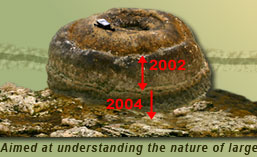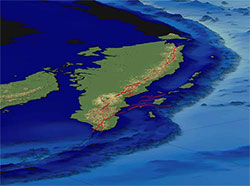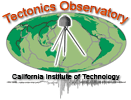 |
 |
 |

Bathymetry and topography of the Sumatran plate boundary shows the arcuate subduction zone cropping out on the seafloor at about 5 km depth (pale against dark blue) and the Great Sumatran fault coursing through the mountainous, volcanic backbone of the island. Topographic data is from NASA’s SRTM. View is toward the southeast. |
The
Sumatran Plate Boundary Project |
|
For General Audiences - Earthquakes and tsunamis in Sumatra: What we have recently learned | |
